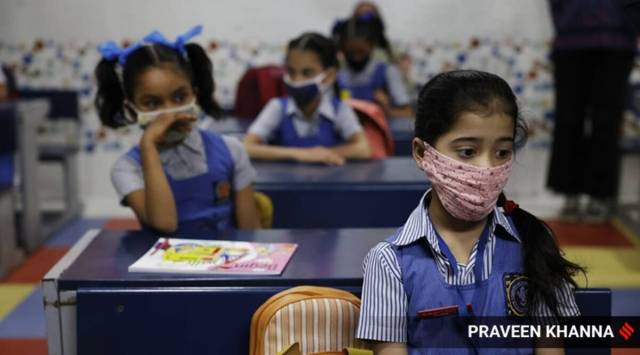
The national-level large-scale assessment survey was conducted by the Ministry of Education on November 12 last year in which students of classes 3, 5, 8 and 10 were tested in various subjects to assess their learning achievement and to assess the impact of the Covid-19 pandemic on academics. The previous NAS was held in 2017.
There was almost equal participation by government and private schools in the survey in Chandigarh. A total of 106 schools, 732 teachers and 5,726 students participated in the survey. Of them, 51.2 per cent were boys and 48.8 per cent were girls. 91 per cent were from urban areas and 9 per cent from rural areas.
For class 3 and 5, the performance has come down when compared with NAS-2017 while for class 8 and 10, students have shown improvements in a few subjects.
Class 3 performance drops
According to the report, 53.4 per cent of class 3 students were at either ‘below-basic’ or ‘basic’ levels and only 46.6 per cent were either ‘proficient’ or ‘advanced’. The performance of students has fallen in all subjects when compared to the 2017 report.
In the learning outcomes, the average performance of class 3 students was below 50 per cent. In language, around 29 per cent students were in the ‘proficient’, 17 per cent in the ‘advanced’ category, 24 per cent in the ‘below basic’ and 31 per cent in the ‘basic’ category.
Story continues below this ad
In mathematics, 36 per cent had a ‘basic’ level of performance and 19 per cent were ‘below basic’. Around 32 per cent were ‘proficient’ and 14 per cent were ‘advanced’.
Similarly in EVS, only 38 per cent were ‘proficient’, and 11 per cent in the ‘advanced’ category, while the rest were at the ‘basic’ or ‘below-basic’ level.
In class 3, around 21 per cent students had no digital devices at home and 32 per cent even experienced worry, anxiety and fear due to the pandemic. Only 40 per cent were happy to be at home.
Most class 5 students at ‘below-basic’ or ‘basic level’
In class 5, 53.4 per cent were in the ‘below basic’ or ‘basic’ categories while 46.6 per cent were in the ‘proficient’ or ‘advanced’ categories.
Story continues below this ad
During the survey, 38 per cent of teachers in this category said they were overloaded with work. Here too, about 30 per cent of them had no digital devices at home and 42 per cent experienced worry, anxiety and fear due to the pandemic.
Most class 8 students had no access to digital devices
Around 98 per cent of students of class 8 faced obstacles in learning due to the pandemic. Around 85 per cent of the students had no digital devices at home.
The survey found that 99 per cent students in this category liked going to school, and 98 per cent said that they understood what the teachers taught in the class. However, 35 per cent of the teachers of this standard stated that they were overloaded with work. In this class too, 52.7 per cent students were at ‘below basic’ or at ‘basic’ level.
In class 10, 51.4 per cent were at ‘below basic’ and ‘basic’ level while 48.6 per cent were at the ‘proficient’ or ‘advanced’ level. Around 80 per cent of these students had digital devices at home and 42 per cent experienced fear and anxiety during the pandemic.









